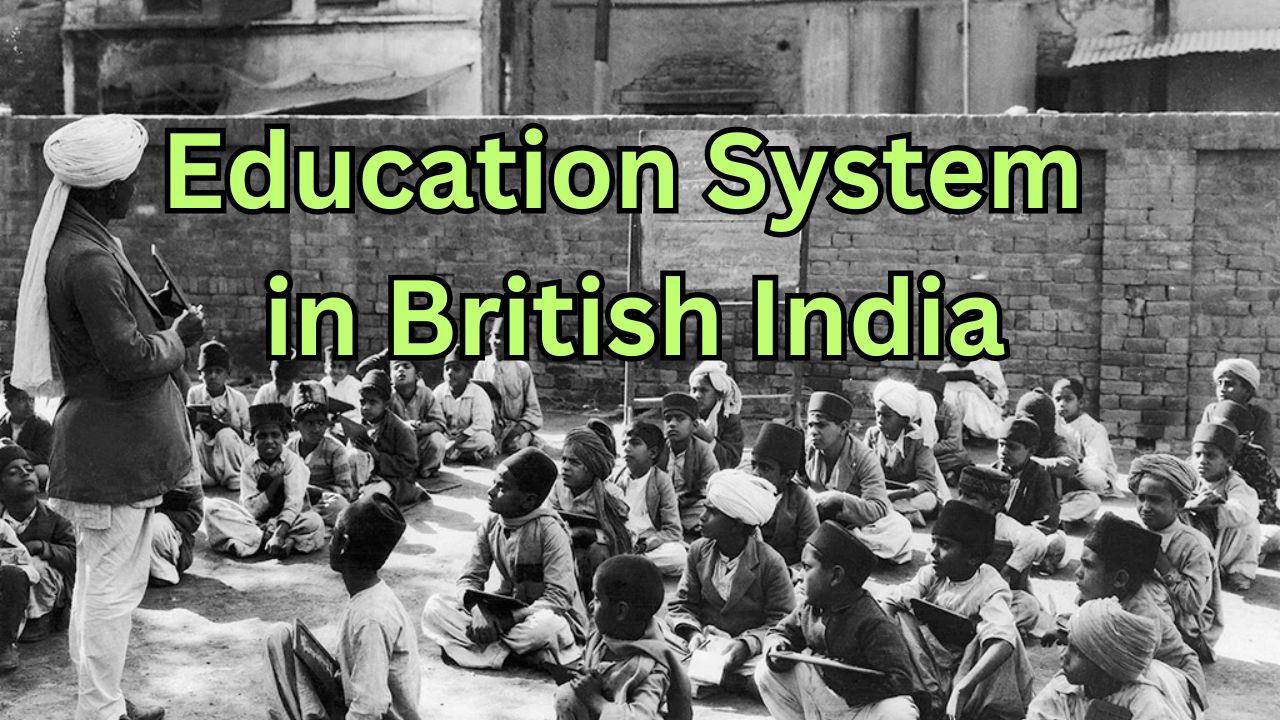
TOPIC 5.10 GROWTH OF MODERN EDUCATION IN INDIA
For the first time, the British Parliament included in the 1813 Charter, a clause under which the Governor-General-in-Council was bound to keep a sum not less than one lakh rupees, for education. However, the company used this fund for promoting Indian language and literature.
The charter allowed the Christian missionaries to spread their religious ideas in India.
The greatest importance of the 1813 Act was that the Company, for the first time, acknowledged state responsibility for promotion of education in India.
Establishment of Calcutta College in 1817 with the efforts of Raja Ram Mohan Roy for imparting Western education. Three Sanskrit colleges were set-up at Calcutta.
In 1823, a General Committee of Public instruction was appointed to look after the development of education in India. but failed due to Orientalist-Anglicist controversy over the nature of education e. traditional or Western and the medium of instruction.
The controversy was settled by Macaulay’s Education Policy 1835, which was approved by Lord William Bentinck. The policy favoured English education to a traditional one.
In 1844. Lord Hardinge decided to give government employment to Indians educated in English schools. This further boosted the Western education in India.
Bethune school was founded by JED Bethune at Calcutta (1849), Agricultural Institute at Pusa (Bihar) and Engineering Institute at Roorkee.
In 1854. Charles Wood prepared a dispatch on an Educational System for India, which came to be called the Magna Carta of Education in the country. According to Woods scheme.
The government needed to spread Western education through the English medium for higher education. But Vernacular primary schools should be set-up in rural areas.
A grants-In-aid system to encourage private enterprises involvement in education.
A department of public instruction to be set-up in each of the five provinces.
Universities in Calcutta (1857). Bombay (1857) and Madras (1857) were established.
Teacher’s training institutions.
Promotion of Education for Women.
Most of Wood’s proposals were implemented, which led to Westernisation of the Indian Educational System.
The British introduced several key educational policies in India during their colonial rule, which significantly impacted the educational landscape of the country.
Here are seven important points regarding British policies on education in India:
1. Charter Act of 1813
Fact: The Charter Act of 1813 marked the beginning of British efforts to improve education in India. It allocated Rs. 1 lakh annually for the promotion of education in the country, particularly for the education of the Indian population.
2. Establishment of the Asiatic Society (1784)
Fact: Established by Sir William Jones, the Asiatic Society aimed to promote the study of Indian history, culture, and languages. It played a crucial role in the collection and preservation of Indian manuscripts and texts.
3. Macaulay's Minute (1835)
Fact: Thomas Macaulay’s Minute on Indian Education emphasised the promotion of English as the medium of instruction and the teaching of Western literature and science. This policy significantly impacted the education system, prioritising English over local languages.
4. Wood's Dispatch (1854)
Fact: Often referred to as the "Magna Carta of English Education in India," Wood's Dispatch proposed the establishment of a system of education with a clear structure, including the creation of a network of schools and colleges. It advocated for primary, secondary, and higher education and stressed the importance of teacher training.
5. Hunter Commission (1882)
Fact: The Hunter Commission, led by Sir William Hunter, was set up to review the state of education in India.
In 1882, Lord Ripon appointed the Hunter Commission under Sir WW Hunter. The commission’s views were restricted to primary and secondary education. It emphasised over the state’s role in extending education, female education and to involve private enterprise in education.It recommended the establishment of a robust system of primary education and improvements in the curriculum and administration of schools.
As a result, Punjab (1882) and Allahabad (1887) Universities were established.
Lord Curzon appointed the University Commission under Sir Thomas Rayleigh Based on his report, the Indian Universities Act was passed in 1904.
6. Indian Universities Act (1904)
Fact: The Indian Universities Act of 1904 aimed to improve the quality of higher education by increasing government control over universities and introducing regulations to enhance academic standards. It was part of the British effort to make Indian universities more efficient and accountable.
7. The Compulsory Education Act (1918)
Fact: The Act mandated compulsory education for children in certain age groups, although its implementation was limited and varied across regions. It aimed to increase literacy rates and provide educational opportunities to a broader segment of the Indian population.
8. Sergeant Plan, 1944
The Sergeant Plan, worked out by the Central Advisory Board of Education in 1944, called for elementary and higher secondary schools, universal, free and compulsory education for children in the 6-11 age group and a six-year school course for the 11-17 age group.
Though the plan aimed to reconstruct education in 40 years, it was later restricted to 16 years.
Sir John Sergeant was the Educational Advisor to the Government of India.
In 1882, Lord Ripon appointed the Hunter Commission under Sir WW Hunter. The commission’s views were restricted to primary and secondary education. It emphasised over the state’s role in extending education, female education and to involve private enterprise in education.
As a result, Punjab (1882) and Allahabad (1887) Universities were established.
Lord Curzon appointed the University Commission under Sir Thomas Rayleigh Based on his report, the Indian Universities Act was passed in 1904.
